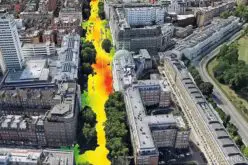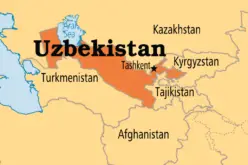Seafloor Mapping May Help in Finding Malaysian Airlines MH370
According to the two world’s leading ocean floor mapping experts, come up with a new illustration of the seafloor with details underwater terrain where the missing Malaysia Airlines flight might be located.
These maps could be an additional source of information that could be used to find the missing airplane MH370 and its derbies might lie.
![Seafloor topography in the Malaysia Airlines flight MH370 search area. Dashed lines approximate the search zone for sonar pings emitted by the flight data recorder and cockpit voice recorder popularly called black boxes. The first sonar contact (black circle) was reportedly made by a Chinese vessel on the east flank of Batavia Plateau (B), where the shallowest point in the area (S) is at an estimated depth of 1637 meters. The next reported sonar contact (red circle) was made by an Australian vessel on the north flank of Zenith Plateau (Z). The deepest point in the area (D) lies in the Wallaby-Zenith Fracture Zone at an estimated depth of 7883 meters. The Wallaby Plateau (W) lies to the east of the Zenith Plateau. The shallowest point in the entire area shown here is on Broken Ridge (BR). Deep Sea Drilling Project (DSDP) site 256 is marked by a gray dot. The inset in the top left shows the area’s location to the west of Australia. Seafloor depths are from the General Bathymetric Chart of the Oceans [2010]. Credit: Walter H.F. Smith and Karen M. Marks](http://www.gisresources.com/wp-content/uploads/2014/06/Seafloor-topography-in-the-Malaysia-Airlines-flight-MH370-878x1024.jpg)
Credit: Walter H.F. Smith and Karen M. Marks
Seafloor topography in the Malaysia Airlines flight MH370 search area. Dashed lines approximate the search zone for sonar pings emitted by the flight data recorder and cockpit voice recorder popularly called black boxes. The first sonar contact (black circle) was reportedly made by a Chinese vessel on the east flank of Batavia Plateau (B), where the shallowest point in the area (S) is at an estimated depth of 1637 meters. The next reported sonar contact (red circle) was made by an Australian vessel on the north flank of Zenith Plateau (Z). The deepest point in the area (D) lies in the Wallaby-Zenith Fracture Zone at an estimated depth of 7883 meters. The Wallaby Plateau (W) lies to the east of the Zenith Plateau. The shallowest point in the entire area shown here is on Broken Ridge (BR). Deep Sea Drilling Project (DSDP) site 256 is marked by a gray dot. The inset in the top left shows the area’s location to the west of Australia. Seafloor depths are from the General Bathymetric Chart of the Oceans [2010].
Walter H.F. Smith and Karen M. Marks of the National Oceanic and Atmospheric Administration’s Laboratory for Satellite Altimetry in College Park, Maryland created the seafloor map. The experts are also former and current chairs of the Technical Sub-Committee on Ocean Mapping of the General Bathymetric Chart of the Oceans (GEBCO) – an organization that seeks to provide the most authoritative, publicly available maps of the depths and shapes of the terrain found beneath the sea.
The seafloor topography map illustrates jagged plateaus, ridges, and other underwater features of a large area underneath the Indian Ocean where search efforts have focused since contact with Malaysia Airlines flight MH370 was lost on March 8. The image was published today in Eos, the weekly newspaper of the Earth and space sciences, published by the American Geophysical Union.
The new illustration of a 2,000 kilometer by 1,400 kilometers (1,243 miles by 870 miles) area where the plane might show locations on the seafloor corresponding to where acoustic signals from the airplane’s black boxes were reportedly detected at the surface by two vessels in the area. It also shows the two plateaus near where these “pings” were heard.
In a news bulletin, Smith said that the terrain and depths shown in the map could help searchers choose the appropriate underwater robotic vehicles they might use to look for the missing plane. Knowing the roughness and shape of the ocean floor could also help inform models predicting where floating debris from the airplane might turn up.
Smith cautions that the new illustration is not a roadmap to find the missing airplane. Nor does the map define the official search area for the aircraft, he added.
“It is not ‘x marks the spot’,” Smith said of their map. “We are painting with a very, very broad brush.”
Source: Seafloor in the Malaysia Airlines Flight MH370 Search Area










